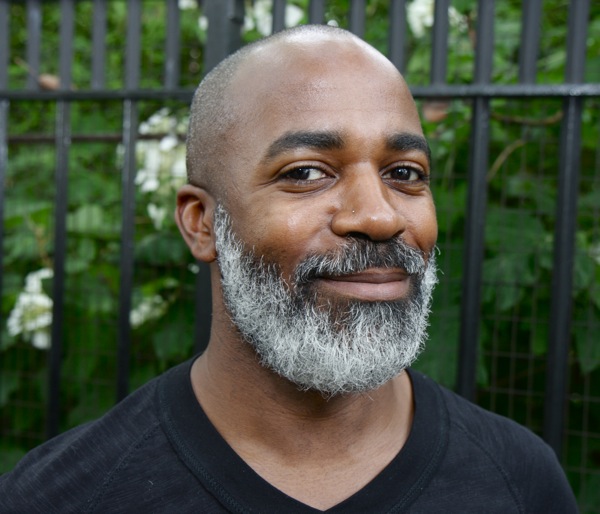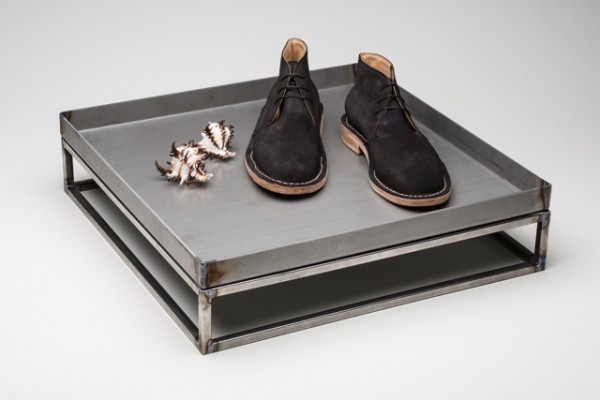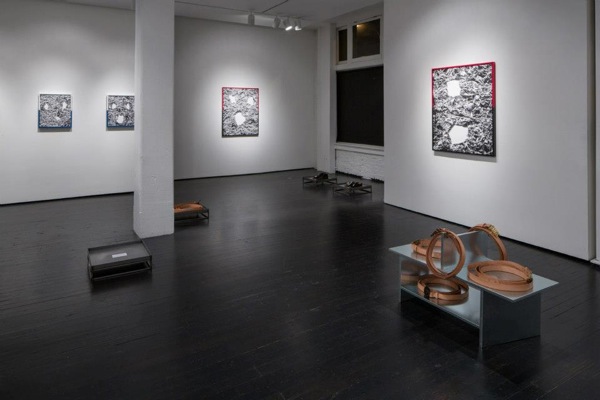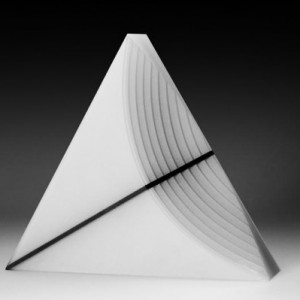Arnold Joseph Kemp: RISING FROM THE EDGE OF A MAN'S SORROW
ARNOLD J.KEMP is an artist, painter, photographer. Arnold has been creating and exhibiting regularly for 20 years, while concurrently writing and publishing critical and creative texts. His work resides in the collections of the Metropolitan Museum of Art, The Studio Museum in Harlem, The Berkeley Art Museum, The Tacoma Art Museum, the Fine Arts Collection at the University of California, Davis, the Schneider Museum of Art, Ashland, OR; and in the collection of JP Morgan Chase Manhattan Bank. He is the recipient of awards and fellowships from the John Simon Guggenheim Foundation (2012), the Pollock-Krasner Foundation (2003), the Joan Mitchell Foundation (2001), Artadia Fund for Art & Dialogue (2001), Art Matters Grant (2009), and Printed Matter Award for Artists (2009).
Arnold is currently Painting and Printmaking Chair & Associate Professor at School of the Arts Virginia Commonwealth University.
Interview by Will Kitson
What was the first ever inspiration that set the course for your life as an artist?
When I was quite young, around 9 or 10 years old, I went to New York City to visit an older sibling who was living and working there. One day, since she had to go to work, she left me at the Metropolitan Museum to wander around on my own. So for about six hours I obsessed on looking and looking, again and again and again on only two things — Picasso’s Portrait of Gertrude Stein and the Met’s amazing African and Oceanic Art Collection. I have had several experiences when I was alone in a museum when directions and attitudes of how to be an artist somehow were revealed to me.
You say that artists should be ‘trying to bring new ideas into culture, not just new objects.’ Could you expand upon this for us?
Did I say this? (Was it Warhol or Duchamp who said that a chair is more useful than a painting?) Certainly after Duchamp the idea has meant more than the object in art. Warhol had great ideas, and so did Cezanne, Sol Lewit, Adrian Piper, Isa Genzken and John Baldessari. I think that understanding art as a history of consciousness is the only way to evolve a practice and to contribute to the world.
While your work often deals with serious subject matters, you manage to include a sense of humour into your projects. Is this a conscious decision and, if so, why is it important to you?
Life is absurd, and sometimes you have to laugh to keep from crying. I am never the same person from day to day or moment to moment. High seriousness is not the only way to get a point across or to express profound decision making in art. I think I used to make a difference between my real work and my fun work. Now I am beginning to feel that when I am working too hard that I could make better artwork by working less, and that when I am prone to laziness I could make better work by working harder.
Please tell us about your latest project WHEN WILL MY LOVE BE RIGHT?
The title of this latest show which was mounted in Portland, Oregon at PDX Contemporary from January 22, 2013 – March 2, 2013 was inspired by a song by Robert Winter and Fall that came out in 1981. The plaintive tone of the song and its direct address to the audience really moves me and echoes the affect that comes out in my work. I am creating things that intuitively engage social situations that deal with people, economy, history, identities, etc.
Besides a new sculpture titled WHEN WILL MY LOVE BE RIGHT? , that was made of several incredibly long leather belts, there were smaller sculptures of shoes —and I made the shoes by hand— there was also another sculpture contained a small text on a 3 x 5 inch card and also several unique prints of absurd mask-like images.
Another object in the show was a 20 minute play that was performed on one of the last nights of the exhibition. Titles play a big part in how the work is received by the public so besides WHEN WILL MY LOVE BE RIGHT?, there was also LET HIS BODY BECOME A LIVING LETTER and IN BLACK AND WHITE SPACES WE CAN’T LOSE OUR LOSSES. The play was called IN ARMS and uses readymade material, overheard speech, and observed gesture. In the play three voices speak out of impossible living and loving situations in an attempt to shift the perception of everyday reality from ignorance and unease to one of presence.
Much of your work is concerned with identity and subjectivity. How do you feel your art has helped you develop these ideas?
I believe that all artwork is personal and yet there is work that really touches on experiences unique to an individual subject. Some freedom is found here, and that has always been what my work has been chasing — I think it is much more about my way of being human than the literal idea of identity. One always has to ask whose identity.
Tell us about a time or a project which you’ve struggled with creatively. How did you overcome this?
Being alone really helps. The only struggle is with making a space for contemplation.
What advice would you give to less experienced creatives, those who are still trying to find their own unique voice?
Read a really good novel or a perplexing book of poems and then read it again and again and again. Or find a place that you like to go to and visit it often. Stay there as long as you can. Hopefully you will get to know yourself.
Where do feel most comfortable creating?
In an airplane.
W.K. 2013
Published: January 14th, 2014








